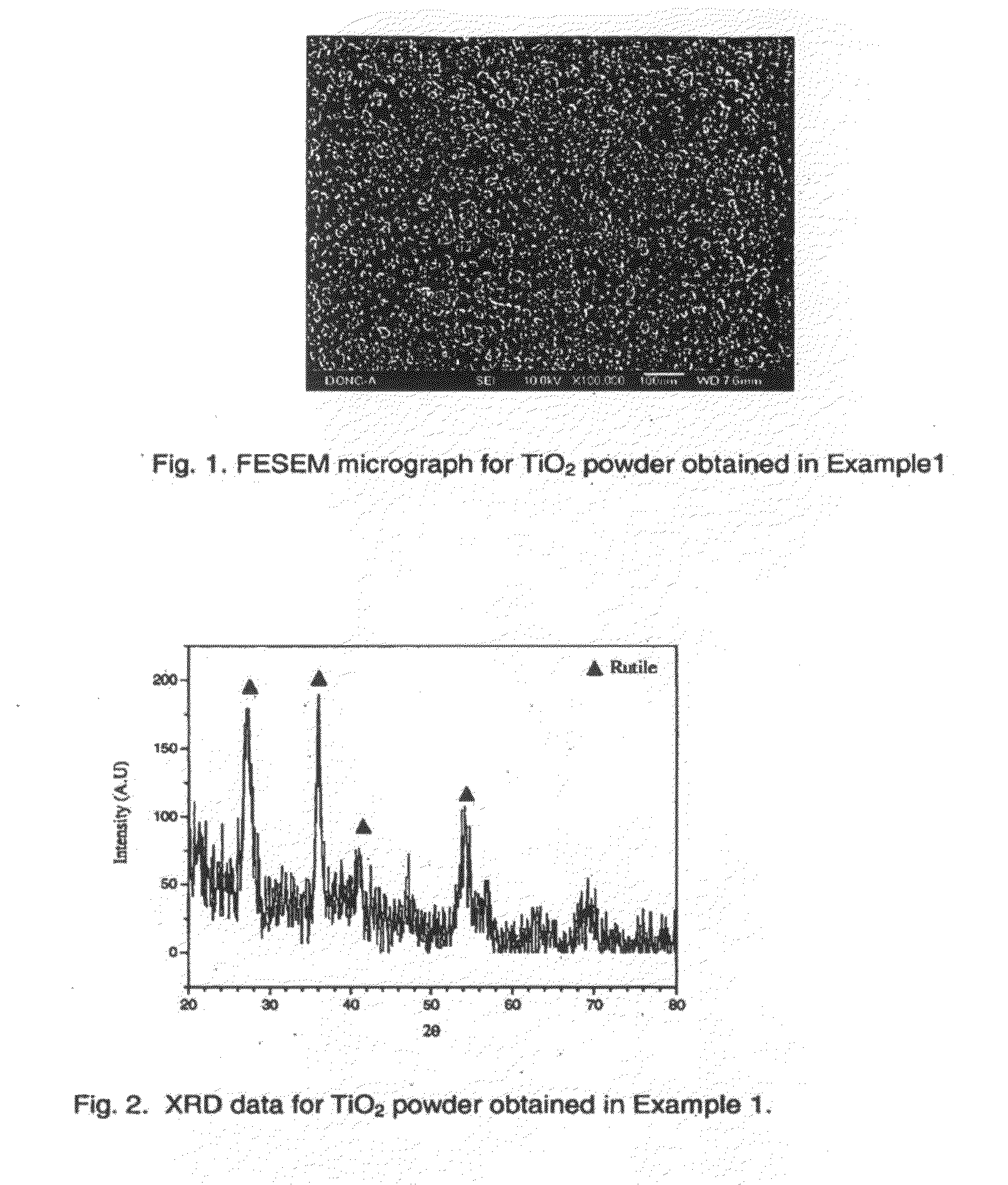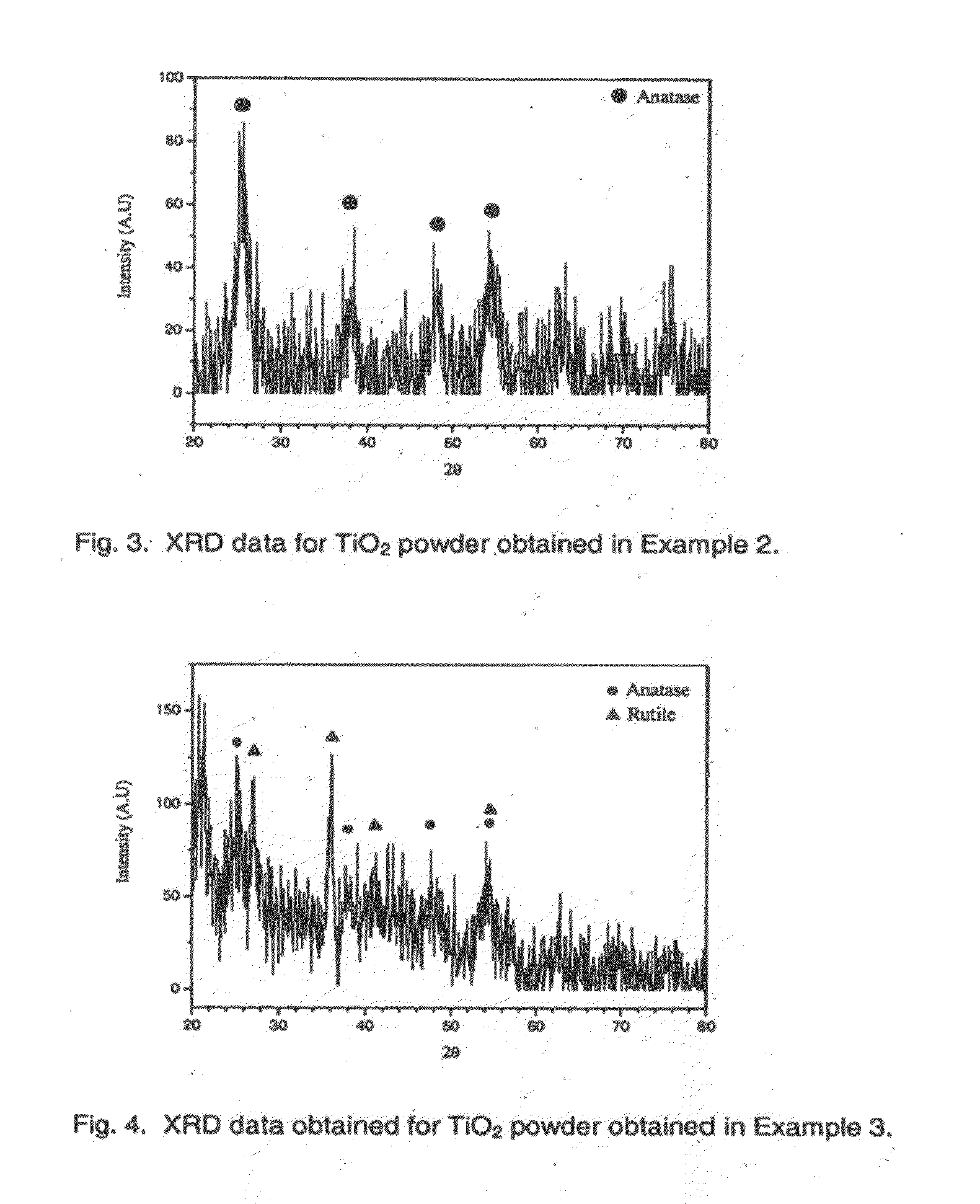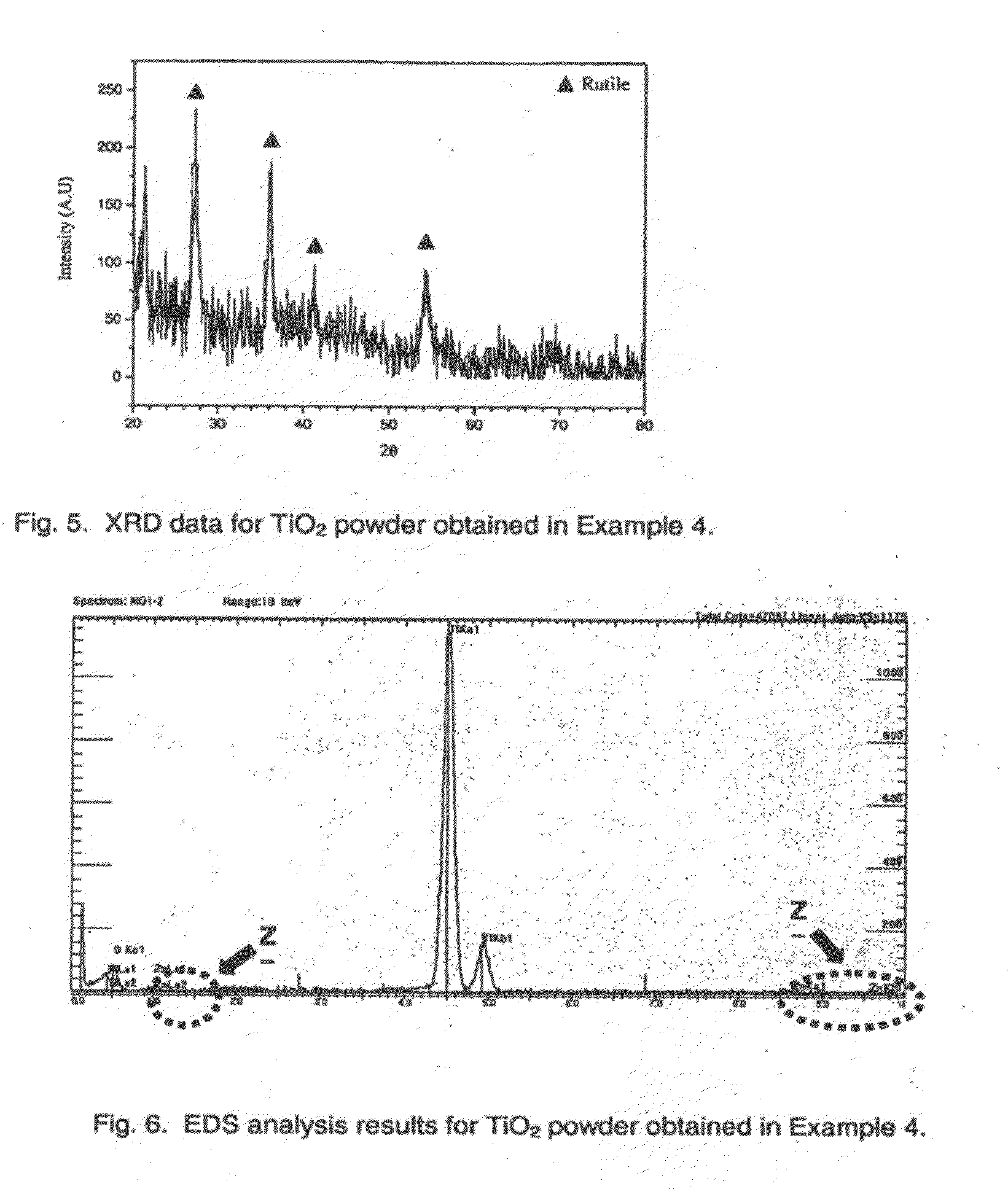Low temperature process for producing nano-sized titanium dioxide particles
a titanium dioxide and nano-sized technology, applied in the direction of titanium compounds, hydrogen peroxide, chemistry apparatus and processes, etc., can solve the problems of disadvantageous sulfate and chloride processes and high-purity tio synthesizing, and achieve high-purity tio2 synthesis at low temperature
- Summary
- Abstract
- Description
- Claims
- Application Information
AI Technical Summary
Benefits of technology
Problems solved by technology
Method used
Image
Examples
example 1
[0027]A yellow TiOCl2 solution was prepared by dropping TiCl4 in ice and diluting the solution until a concentration of Ti ions became about 4M to 5.5M. The TiOCl2 solution was stirred and agitated while slowly adding 30% H2O2 thereto at a molar concentration ratio identical to that of Ti. In this instance, a dark red (brown) Ti-peroxo complex was formed and heat was generated at the same time. The molar concentration of Ti ions became about 3M in the resulting solution by further adding ice. The dark red solution was heated and stirred at a temperature of about 80° C. for about 1.5 hours. After 1.5 hours, the solution was all precipitated as white 1102 crystalline phases. By neutralizing, washing, and drying the solution with NaOH, the size of initial particles, which were acquired from FE-SEM (FIG. 1) and XRD analysis (FIG. 2), was about 10 nm, and the resulting phases of XRD were all rutile.
example 2
[0028]A dark red peroxo complex was formed by adding 30% H2O2 to a 24% Ti(SO4)2 solution at a molar concentration ratio identical to that of Ti. The pH level of the solution was made to become about 0.8 by adding NH4OH to said peroxo complex. A molar concentration of Ti ions became about 0.5M by adding purified water or ice to the solution. By washing and drying a TiO2 solution, which was obtained by heating and stirring the solution at a temperature of about 100° C. for more than two hours, the resulting phase of the XRD analysis (FIG. 3) were all anatase.
example 3
[0029]A yellow TiOCl2 solution was prepared by dropping TiCla in ice and diluting the solution until a concentration of Ti became about 4M to 5.5M. The TiOCl2 solution was stirred while quickly adding 30% H2O2 thereto at a molar concentration ratio identical to that of Ti. In this instance, a dark red (brown) Ti-peroxo complex was formed and heat was generated at the same time. The molar concentration of Ti ions became about 3M in the resulting solution by further adding purified water. The dark red solution was heated and stirred at a temperature of about 80° C. for about 1.5 hours. After 1.5 hours, the solution was all precipitated as white TiO2 crystalline phases. By neutralizing, washing, and drying the solution with NaOH, the resulting phases of the XRD analysis (FIG. 4) were a mixture of anatase and rutile phases.
PUM
| Property | Measurement | Unit |
|---|---|---|
| temperature | aaaaa | aaaaa |
| temperature | aaaaa | aaaaa |
| temperature | aaaaa | aaaaa |
Abstract
Description
Claims
Application Information
 Login to View More
Login to View More - R&D
- Intellectual Property
- Life Sciences
- Materials
- Tech Scout
- Unparalleled Data Quality
- Higher Quality Content
- 60% Fewer Hallucinations
Browse by: Latest US Patents, China's latest patents, Technical Efficacy Thesaurus, Application Domain, Technology Topic, Popular Technical Reports.
© 2025 PatSnap. All rights reserved.Legal|Privacy policy|Modern Slavery Act Transparency Statement|Sitemap|About US| Contact US: help@patsnap.com



